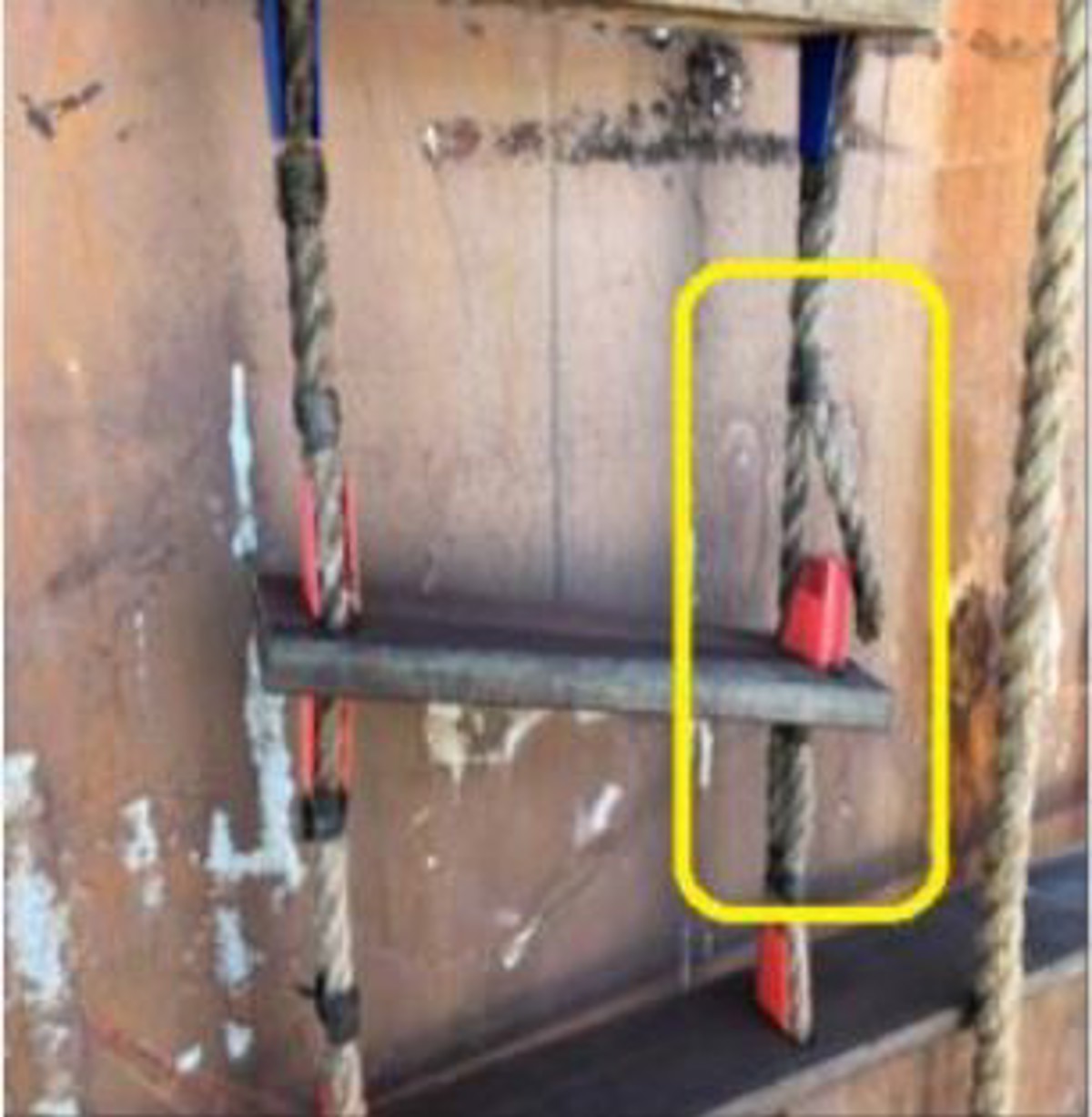OCIMF: Pilot ladder side rope failure: Unsafe pilot transfer
- Safety Flash
- Published on 30 October 2018
- Generated on 12 December 2025
- IMCA SF 24/18
- 1 minute read
Jump to:
During the disembarkation of two pilots from a condensate tanker, the right anterior side rope of a pilot ladder failed.
What happened?
The structural durability of the ladder was visually assessed by the first pilot and determined to be satisfactory; the second pilot managed to disembark without incident. Further inspection of the ladder revealed a parted side rope, which affected the overall stability of the ladder.

Whilst an incident did not occur this time, the failure of the side rope did in fact create an unsafe condition for pilot transfer, therefore creating a high potential hazard.
What went wrong?
- The pilot ladder side rope had been weakened due to mould.
- Inspections that were in place were ineffective.
What actions were taken? What lessons were learned?
- A close visual inspection by trained personnel could have noticed the damage.
- Improvement needs to be made to the ladder inspection processes.
- Update knowledge on finding faults with pilot ladders and rope damage.
- Change the pilot transfer procedure and review alternative methods.
Related Safety Flashes
-
IMCA SF 16/17
27 June 2017
-
-
IMCA SF 07/17
28 March 2017
-
-
IMCA SF 04/16
5 February 2016
-
IMCA SF 17/13
29 November 2013
IMCA Safety Flashes summarise key safety matters and incidents, allowing lessons to be more easily learnt for the benefit of the entire offshore industry.
The effectiveness of the IMCA Safety Flash system depends on the industry sharing information and so avoiding repeat incidents. Incidents are classified according to IOGP's Life Saving Rules.
All information is anonymised or sanitised, as appropriate, and warnings for graphic content included where possible.
IMCA makes every effort to ensure both the accuracy and reliability of the information shared, but is not be liable for any guidance and/or recommendation and/or statement herein contained.
The information contained in this document does not fulfil or replace any individual's or Member's legal, regulatory or other duties or obligations in respect of their operations. Individuals and Members remain solely responsible for the safe, lawful and proper conduct of their operations.
Share your safety incidents with IMCA online. Sign-up to receive Safety Flashes straight to your email.